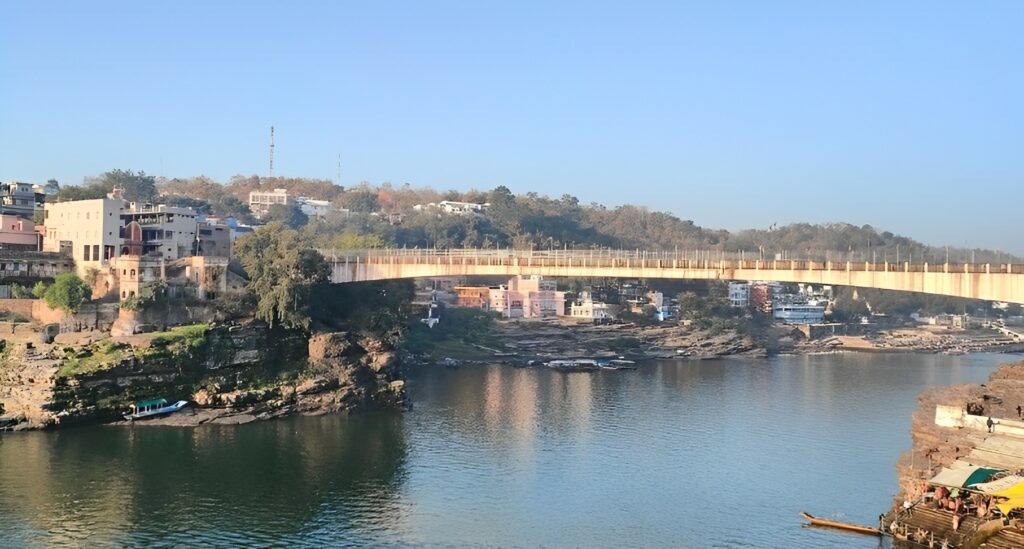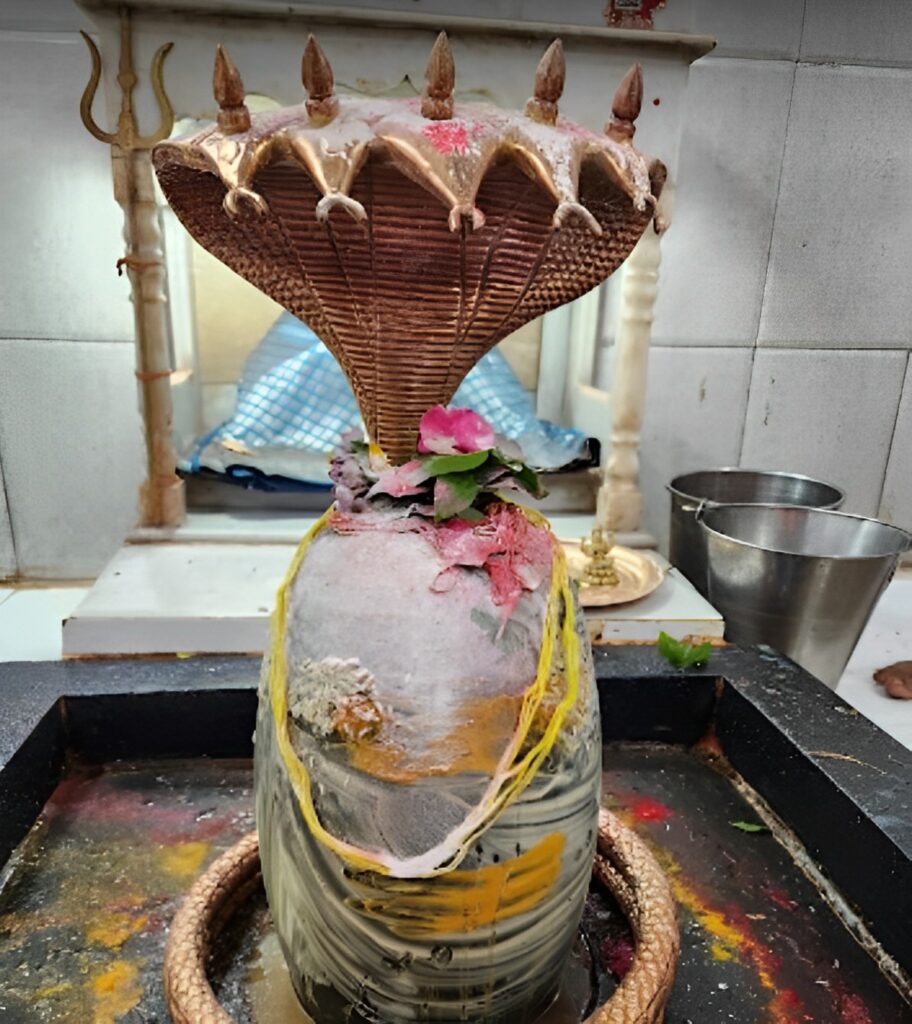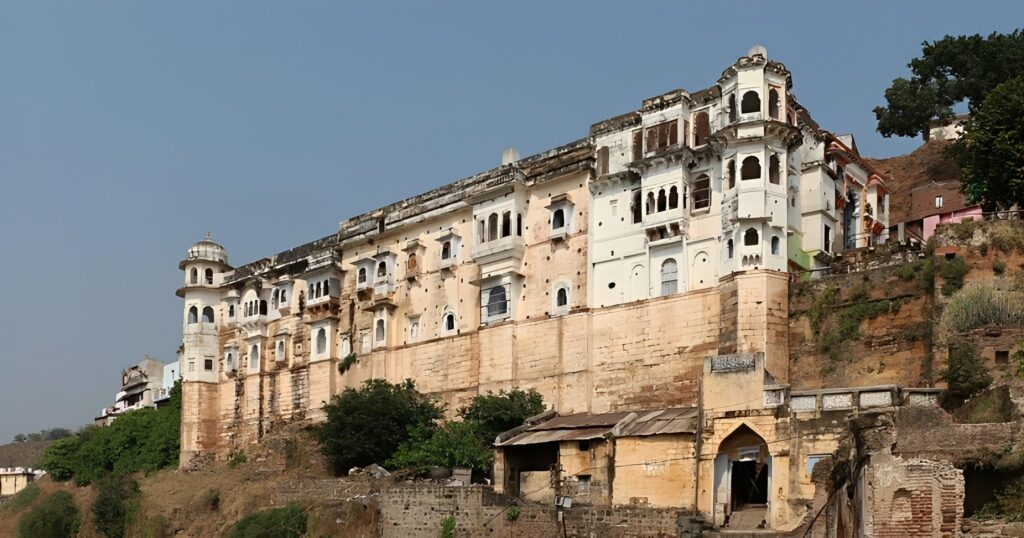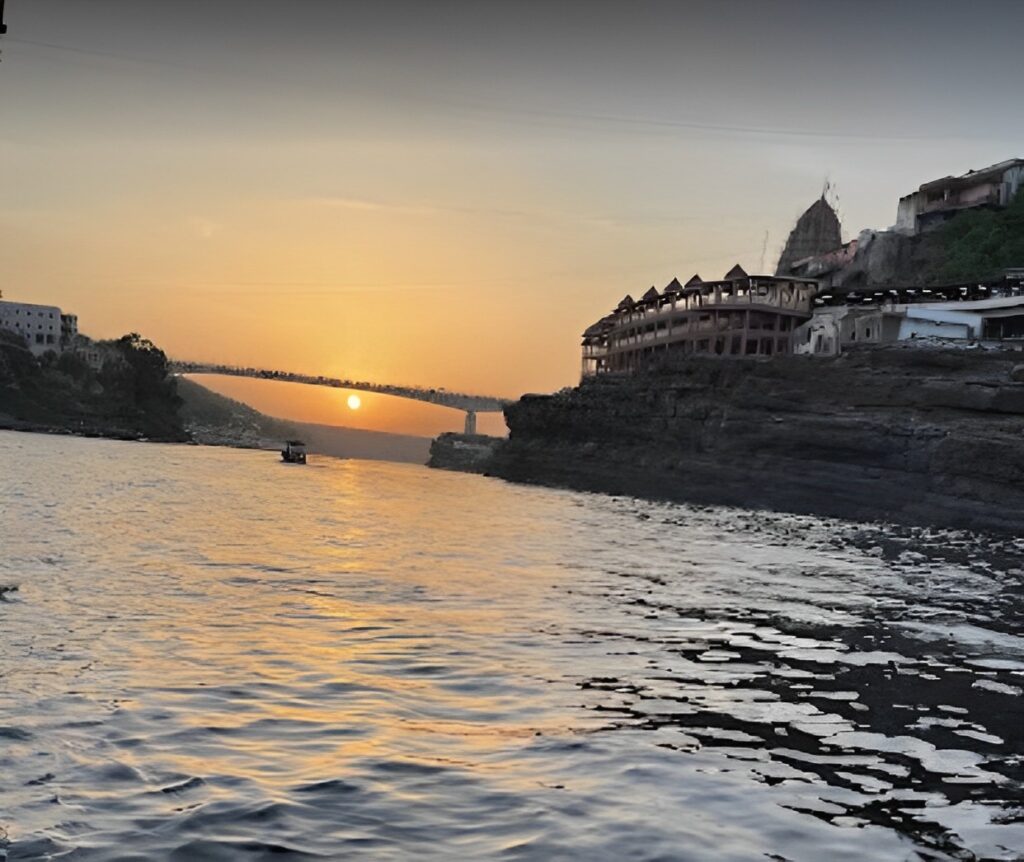
Introduction
Omkareshwar temple, the sacred Jyotilingas, is located in Khandwa city, Khandwa district, MP. The sacred river Narmada carved the shape of the island known as Mandhata in the shape of the symbol Om. The temple houses one of the 12 jyotirlingas across India that are revered by people across the country.
Omkareshwar and Mamleshwar (Amaleshwar) temples are located on the northern and southern banks of the river Narma on the island Mandhata. Omkareshwar (a name signifying “lord of sound”) and Mamleshwar mean “immortal lord” or “land of immortals.” Madhya Pradesh has two Jyotilingas; the other one, Mahakaleshwar, India, is 140 km from Omkareshwar.

Jyoitilingas
Jyotirlingas are highly revered and pious in India. In the Shiva Mahapurana, a very interesting story has been told among the supreme deities Brahma, Vishnu, and Shiva. Once upon a time, all the gods argued over who was the ultimate supreme creator of the world. To test them, Shiva split the three worlds as a huge pillar of light and challenged Brahma and Vishnu to find an end. Both have divided the task; Vishnu has gone downward, and Vishnu has gone upward. While neither found the end of the light, Vishnu admitted defeat, and Brahma lied. As a consequence, Shiva appeared as the second pillar of light and cursed Brahma, saying that he would not be revered while Vishnu would until the end of eternity. In all the jyotirlingas, you will see the manifestation of different images of Shiva, but the common, primary image of the lingam, symbolizing the beginningless and endless Stambha pillar, tells of the infinite nature of Shiva.
Legends and History
There are many stories that give different versions of the origin of the temple. Once, the deity of Vindhachal Mountain worshipped Shiva to absolve him of the crime he had committed. He created a sacred lingam of sand and clay, and, pleased by the worship, Shiva appeared in two forms: Omkareshwar and Amaleshwara. Omkareshwar was given this name because the mud mound resembled the Hindu symbol, Om.

The second story is told about the penance of a king named Mandhata and his son. King Mandhataata (ancestor of the Ikshvaku clan and Lord Ram’s ancestor) worshiped Lord Shiva with great penance and austerity. Lord Shiva, pleased with this, manifested himself as Jyotirlinga. The island’s name, Mandhata, is attributed to the king.
Third storyteller, Once, a great war was fought between the Devta (god) and the Danavas (demons). Following a setback, Devta prayed to Lord Shiva for assistance. Pleased by the prayers, Lord Shiva appeared in the form of Jyotilinas and defeated the Danavas.

Architecture
Many rulers, such as the Paramars in the 11th century and the Holkars in the 19th century, have given patronage to temple construction. Omkareshwar Temple on the island is a beautiful example of Nagara-style architecture and a five-story complex. On the ground, the lingam of Shiva immersed in water receives Abhishkelam three times a day. You need to cross the Narmada River either by boat or a bridge named Jhula Phul. The Mandapa mandap inside the temples, standing on 60 pillars and 14 feet high, has the most beautiful carvings on its walls.
Omkareshwar’s path around the temple is itself an experience. The parikrama path, which runs for 6-7 kilometers along the riverbank and can be reached by foot or by a 30-minute boat ride, is a beautiful journey. During parikrama, you will come across Khedapati Hanuman Mandi and Kadareshwar Temple.
The Adi Shankara Cave (Omkanshawar Temple) is also where Adi Shankara met his guru, Govinda Bahagavatapada. The cave is located just below the Shiva temple.
Sangam
Taking a dip in the Sangam of Narmada and Kuberi (Kaveri) absolves all the sins of devotees. Here, the idol of goddess Narmada is installed to offer blessings to the devotees.
How to reach Omkareshwar temple
Air: Indore is the nearest airport, 75 km away.
Road: Indore city is well connected to others, and you can board a bus.
Rail: The nearest railway station is 12 km from the temple.
Time to visit Omkareshwar temple
Best time to visit: October to March
Timing: 6:00 am to 8:00 pm
